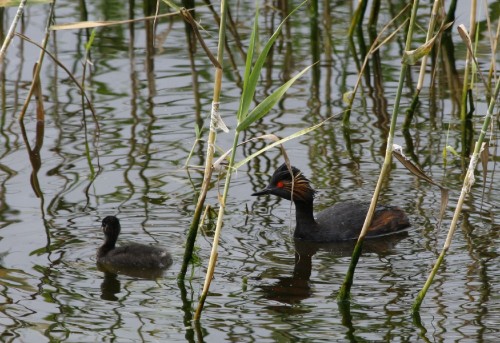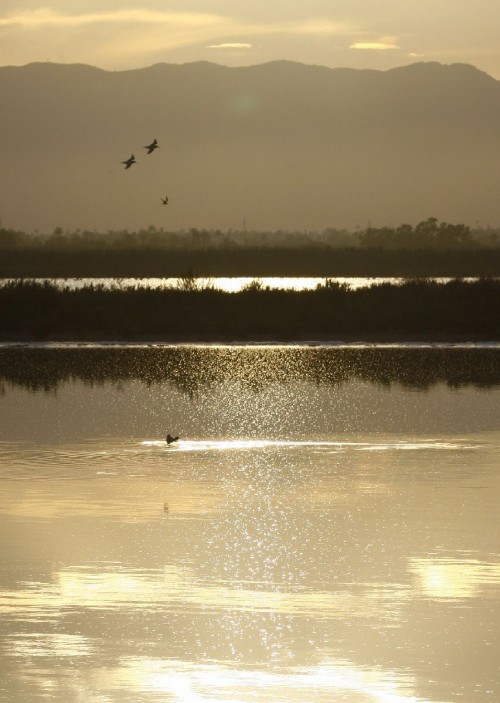Springs and Wetlands
The wetlands are lands flooded temporally or permanently with fresh water, salt or brackish water, and contributions originating from both surface and groundwater. Such spaces have high scenic and ecological value, playing a key role in maintaining biodiversity (they are common areas for nesting and migratory birds and the ecological niche of various endemic species of these environments).
Nowadays, the most important wetlands in the province of Alicante are: “Marjal de Pego-Oliva”, “Hondo de Elche”, “Salinas de Santa Pola” and the salted lagoons of “La Mata y Torrevieja”.
Spring water are natural discharge areas of an aquifer. They are strategic elements for development in the low rainfall areas, such as the province of Alicante. As springs provide beverage, recreation and medicine and enable the implementation of agricultural and industrial activities, even in areas far from river courses. Therefore, in many cases their existence conditions the appearance of population nuclei.
In the province of Alicante there are more than 500 inventoried water springs, 150 of them are significant. While it is true that some of these water springs are currently denatured by regulation works and overexploitation of some aquifers, many of them still have a natural regime. Among the most representative upwellings in the province should be mentioned “Fonts del Algar”, in the Marina Baja, “Font of Bolata” (Tormos), “Molinar” (Alcoy), “Font Major” of Sella or “Cova de les Calaveres” in Benidoleig.




